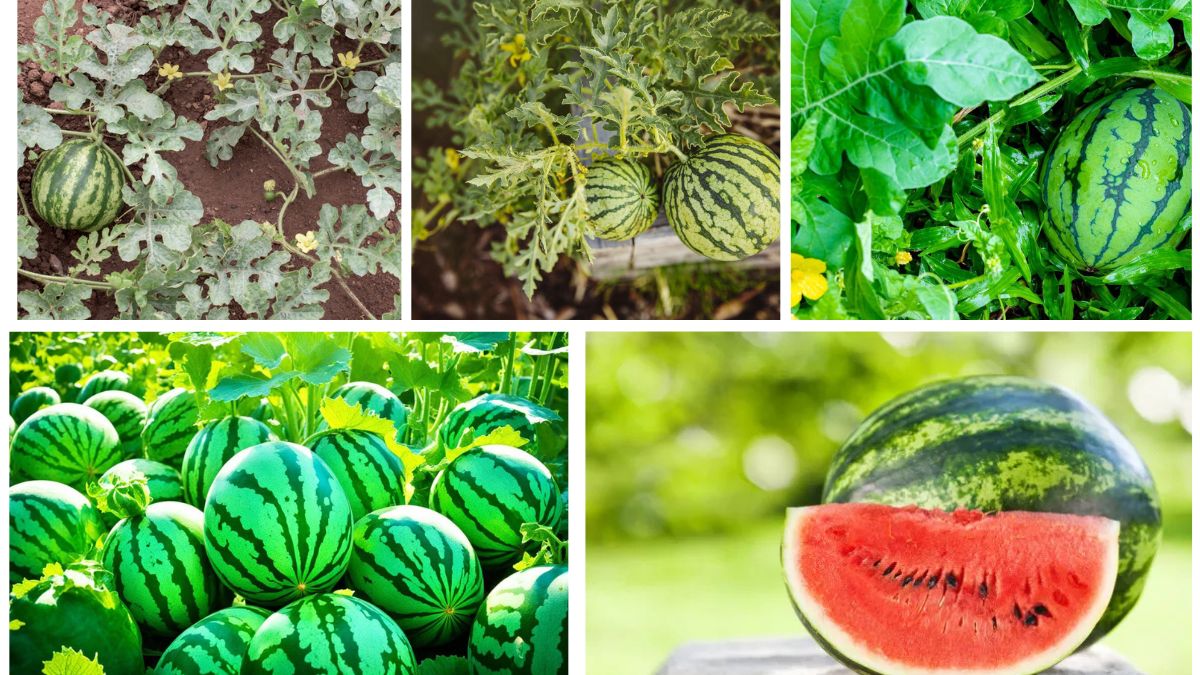Watermelon is one of the most popular summer fruits, known for its juicy sweetness and refreshing taste. Growing your own watermelons at home can be extremely rewarding, allowing you to enjoy fresh, flavorful fruit while also learning the art of gardening. This guide provides a complete, step-by-step approach to planting watermelon seeds, from soil preparation to harvesting, ensuring a bountiful summer harvest.
Introduction
Nothing beats the taste of a homegrown watermelon on a hot summer day. Beyond flavor, watermelons are rich in vitamins A, C, and antioxidants, making them a nutritious addition to your diet. While they are commonly grown in large farms, watermelons can also thrive in home gardens, provided they are planted under the right conditions and receive proper care.
By understanding the growth requirements, soil conditions, watering needs, and planting techniques, even beginners can cultivate healthy watermelon plants that yield sweet, juicy fruits.
1. Selecting the Right Watermelon Variety
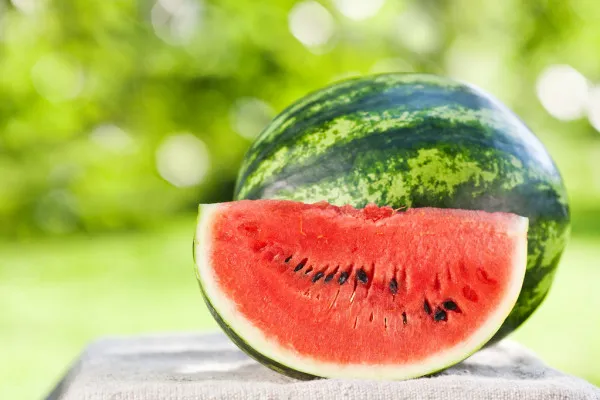
The first step in successful watermelon cultivation is choosing the right variety. Watermelons come in different types, each with unique characteristics.
Popular Varieties:
- Sugar Baby: Small, round, and extremely sweet; ideal for home gardens with limited space.
- Crimson Sweet: Medium to large fruit with red flesh and a classic sweet flavor.
- Charleston Gray: Large, oval-shaped watermelon with thick skin, excellent for storage.
- Seedless Varieties: Hybrid varieties that produce seedless fruits, perfect for snacking.
Factors to Consider:
- Climate compatibility: Some varieties are better suited for warm, sunny climates, while others can tolerate slightly cooler conditions.
- Space availability: Larger watermelons need more space for vines to spread.
- Desired fruit size and taste: Consider family preferences and intended use (snacking, juicing, or salads).
Benefits:
Selecting the right variety increases germination success, fruit quality, and overall yield.
2. Preparing the Planting Site
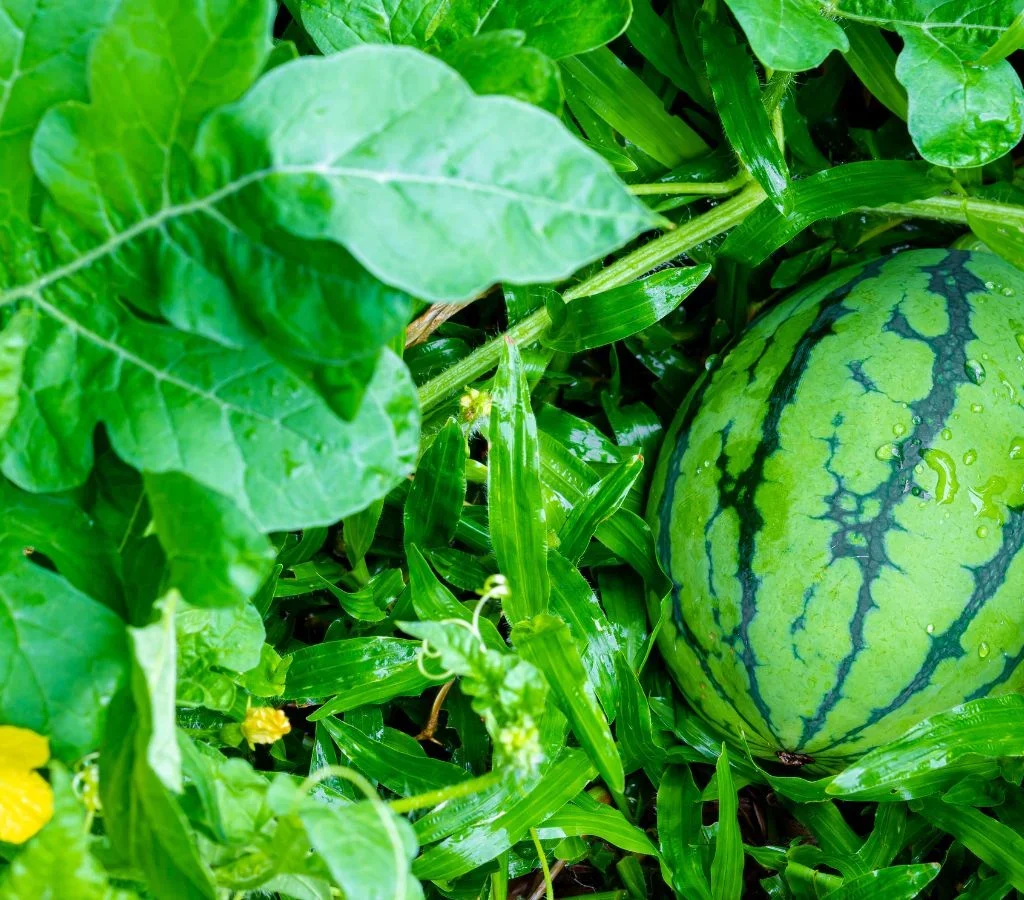
Watermelons thrive in warm, sunny locations with well-draining soil. Proper site preparation is key to healthy growth.
Steps:
- Choose a sunny spot: Watermelons need at least 6–8 hours of direct sunlight daily.
- Test the soil: Ideal soil pH is 6.0–7.0. Sandy loam is preferred for good drainage.
- Add organic matter: Compost or well-rotted manure enriches the soil with nutrients.
- Loosen the soil: Dig to a depth of 12–15 inches to allow roots to grow freely.
Benefits:
Well-prepared soil promotes strong root development, prevents waterlogging, and provides essential nutrients for vigorous plant growth.
3. Planting Watermelon Seeds
Watermelon seeds can be planted directly in the garden or started indoors for earlier growth.
Direct Planting:
- Wait until soil temperatures reach 70–95°F (21–35°C).
- Create small hills or mounds, 2–3 feet apart, to allow vines to spread.
- Plant 2–3 seeds per mound, 1 inch deep.
- Water gently after planting.
Indoor Starting:
- Use seed trays or pots with seed-starting mix.
- Sow seeds 1 inch deep and keep soil moist.
- Place in a warm, sunny location or under grow lights.
- Transplant seedlings outdoors after 3–4 weeks when they have 2–3 true leaves and frost danger has passed.
Benefits:
Proper planting ensures optimal seed germination, healthy seedlings, and a head start on the growing season.
4. Watering and Irrigation
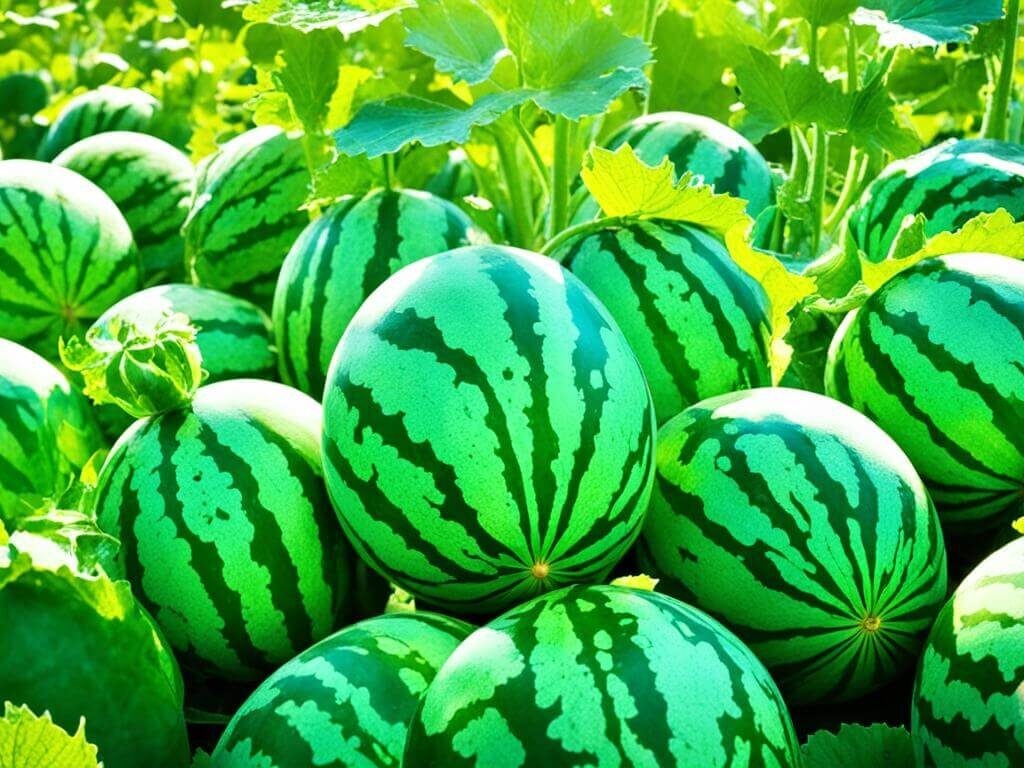
Watermelon plants require consistent moisture, especially during flowering and fruit development.
Guidelines:
- Germination stage: Keep soil consistently moist but not waterlogged.
- Seedling stage: Water deeply 1–2 times per week, ensuring the soil remains evenly moist.
- Fruit development: Avoid wetting foliage; use drip irrigation or water at the base to prevent fungal diseases.
- Reduce watering: About 2 weeks before harvest to improve sweetness.
Benefits:
Proper watering prevents stress, encourages large fruits, and reduces the risk of diseases like powdery mildew.
5. Fertilizing Watermelon Plants
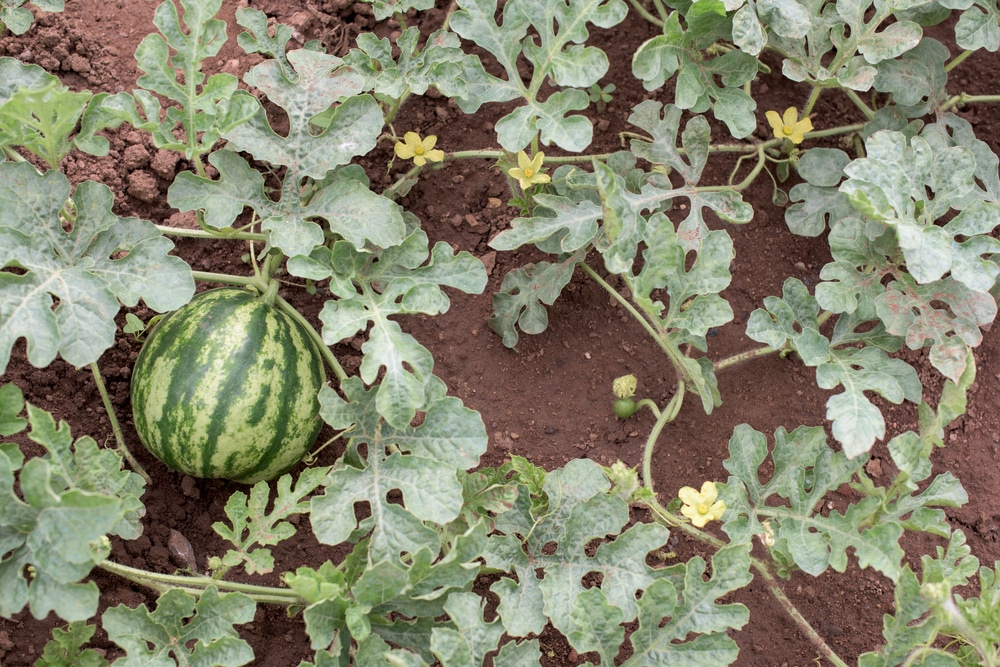
Fertilization is critical for robust growth and abundant fruit production.
Tips:
- Use a balanced fertilizer (10-10-10) during the early growth stage.
- Switch to a phosphorus and potassium-rich fertilizer once flowers appear to promote fruit development.
- Avoid excessive nitrogen after flowering, as it encourages leafy growth at the expense of fruit size.
Benefits:
Correct fertilization ensures healthy vines, vibrant flowers, and juicy, sweet watermelons.
6. Supporting Vines and Pruning
Watermelon vines spread extensively, and some pruning can improve air circulation and fruit quality.
Tips:
- Train vines to grow in a specific direction if space is limited.
- Remove damaged or weak vines to focus energy on main growth.
- Avoid heavy pruning, as watermelons develop best with ample leaf coverage.
Benefits:
Pruning promotes better airflow, reduces fungal risks, and directs energy toward fruit production.
7. Pollination
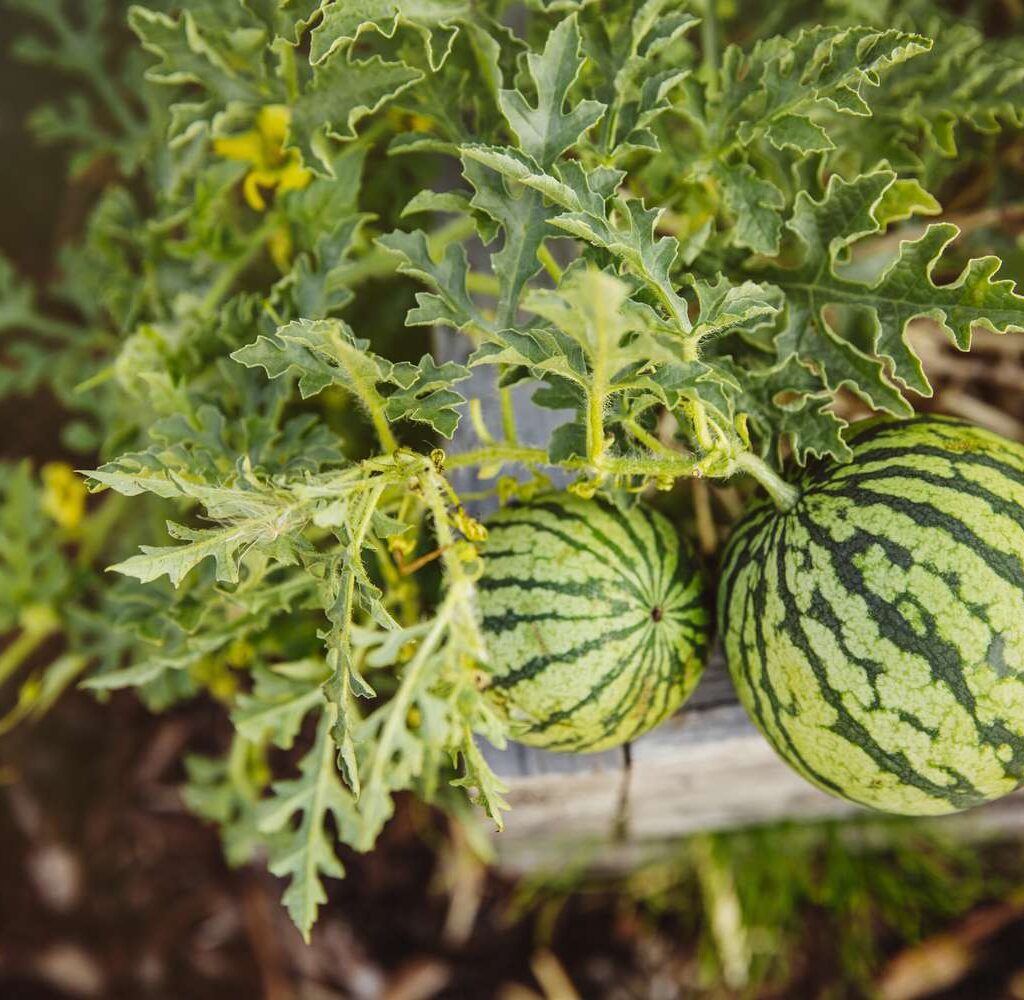
Watermelon plants have male and female flowers, and pollination is essential for fruit development.
Tips:
- Encourage pollinators like bees by planting flowers nearby.
- Hand pollination can be done using a small brush to transfer pollen from male to female flowers if natural pollination is insufficient.
Benefits:
Effective pollination ensures fruit sets properly and develops into full-sized, sweet watermelons.
8. Pest and Disease Management
Watermelons are susceptible to pests like aphids, cucumber beetles, and diseases like powdery mildew.
Preventive Measures:
- Rotate crops annually to reduce soil-borne diseases.
- Use mulch to suppress weeds and retain soil moisture.
- Inspect plants regularly and remove affected leaves.
- Apply organic insecticides or fungicides if necessary.
Benefits:
Early pest and disease management protect your crop, ensuring high-quality fruit and continuous plant growth.
9. Harvesting Watermelons
Knowing when to harvest is key to enjoying the sweetest fruit.
Indicators of Ripeness:
- Ground spot turns creamy yellow.
- Tendril near the fruit stem dries out.
- Rind color becomes dull, and the fruit sounds hollow when tapped.
Harvesting Tips:
- Use a sharp knife or pruners to cut fruit from the vine.
- Avoid pulling watermelons by hand to prevent vine damage.
- Handle carefully to avoid bruising.
Benefits:
Harvesting at peak ripeness ensures maximum sweetness, juiciness, and nutritional value.
10. Storing and Enjoying Watermelons
Proper storage prolongs freshness and preserves taste.
Tips:
- Store whole watermelons at room temperature for up to 2 weeks.
- Refrigerate cut watermelon for up to 5 days.
- Freeze or juice extra fruit for long-term enjoyment.
Benefits:
Proper storage ensures you can enjoy your homegrown watermelons at their best, reducing waste and enhancing flavor.
Conclusion
Growing watermelons at home is both rewarding and educational, offering sweet summer treats while improving your gardening skills. By selecting the right variety, preparing the soil, planting seeds correctly, and providing careful care, even beginner gardeners can enjoy lush, healthy watermelon plants.
From watering and fertilization to pest management and proper harvesting techniques, each step plays a crucial role in ensuring a bountiful harvest of juicy, sweet fruits. With patience and consistent attention, your homegrown watermelons can become a highlight of summer, delighting family and friends with their natural sweetness and freshness.
Whether planted in a backyard garden, raised bed, or container, watermelons are a versatile and enjoyable crop that reward effort with delicious, nutritious results.
